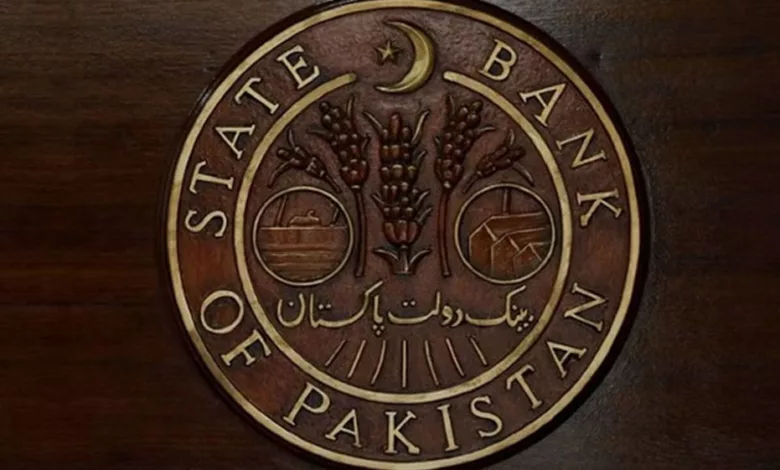Pakistan Central Bank Hiked The Policy Rate By 300 BPS To 20% Amid The Ongoing Crisis: The Highest Policy Rate Since 1996.
The State Bank of Pakistan has now increased the key policy rate to combat record inflation by 300 bps to 20%..

Pakistan Central Bank Hiked The Policy Rate By 300 BPS To 20% Amid The Ongoing Crisis: The Highest Policy Rate Since 1996.
The citizens of Pakistan are being hit twice by rising interest rates and record inflation, which is causing the country’s economic crisis to get worsen.
The State Bank of Pakistan has now increased the Key Policy Rate to combat record inflation by 300 bps. Consumer price inflation has reached its greatest level in more than 50 years, while the State Bank of Pakistan’s (SBP) benchmark interest rate is currently at 20%, the highest level since October 1996.
Although a 200-basis point increase in interest rates was estimated due to the notable inflationary pressure, the central bank of Pakistan decided to go through with a higher raise.
In a note, Capital Economics said that they predicted there will be additional hikes of 200 bps in the upcoming months.
With local media reporting that the rate hike was a crucial need to get the IMF financing released, the SBP had moved up the date of its Monetary Policy Committee (MPC) meeting from its initial date of March 16.
The bank increased the rate by 100 bps to 17% during its most recent policy meeting in January. Since January 2022, rates have increased by a total of 1025 Basis Points.
According to the most recent round of surveys, the recent fiscal adjustments and exchange rate depreciation have caused a significant worsening of the near-term inflation picture and a further upward drift in inflation expectations, the MPC noted.

The SBP predicts that inflation would increase more before it starts to decline. According to the central bank, instead of being estimated to be 21-23% in November 2022, the average annual Inflation Rate is now expected to be in the range of 27-29%.
Due to increasing energy and food prices in February 2023, Pakistan’s inflation increased by 31.5% compared to the same month the previous year. The country had not experienced such a high rate of inflation in nearly 50 years.
According to a spokeswoman for the Pakistan Bureau of Statistics, February 2023’s inflation rate of 31.5% is the highest since the fiscal year of 1974, when it averaged 32.78 percent annually.
The MPC noted, among other things, that vulnerabilities still exist, notwithstanding a large decline in the Current Account Deficit (CAD). The lowest point since March 2021 was reached when the CAD dropped to $242 million in January 2023.
The SBP’s statement noted that the CAD, which was $3.8 billion in Jul-Jan FY23, was down 67 percent from the same time last year.
In addition, they emphasized the urgent necessity for energy conservation measures to relieve pressure on the external account and satisfy other sectors’ import demands.

According to MPC, the measures would aid the heavily indebted country in containing the otherwise rising fiscal and primary deficits, while any large budgetary slippages would reduce the efficacy of monetary policy.
The MPC emphasized that, barring unforeseen future shocks, today’s decision has elevated the real interest rate to positive territory on a prospective basis. According to the statement, this will assist stabilize inflation expectations and guide inflation toward the medium-term target of 5 to 7 percent by the end of FY25.
SBP reported that as of 24 February 2023, the country’s total liquid foreign reserves were $9.27 billion.
The Pakistani rupee had a steep decline on March 2 versus the dollar as trading came to an end after reaching a record high of 285.09 at the time. On March 1, the PKR was worth 266.11 to one US dollar.
The move by Pakistan’s central bank comes as the country tries to obtain an IMF bailout to prevent a debt default. According to Fitch Ratings, Pakistan must make repayments of $7 billion over the next few months, including a $2 billion loan from China that is due in March.
SBP Governor Jameel Ahma stated in an analyst briefing that the country needs to repay around $3 billion in debt, while another $4 billion is expected to be carried over till June.

How Pakistan is fighting the economic crisis?
With the rupee depreciating, petrol prices skyrocketing, and tariffs on luxury products rising, Pakistan has been sliding into a severe economic crisis. Moreover, China has stepped in to help by funding 700 billion USD this week. The nation is working tirelessly to access the next installment of the IMF’s $6.5 billion credit facility from the International Monetary Fund (IMF).
The financial organization has set forth a number of requirements for Pakistan to overcome the economic downturn. Pakistan has accepted all of these requirements to get $1 billion in International Monetary Fund (IMF) funding and raised taxes on luxury products and services, adjusted energy costs, eliminated all subsidies, etc.
The country has devised a cost-cutting strategy to address the financial crisis. In order to save money for the government and secure the IMF deal, it has instructed the ministers and advisors to give up their benefits.
In an effort to save the government 200 billion rupees annually, Pakistani Prime Minister Shehbaz Sharif has instructed his ministers and advisers to travel in economy class, renounce fancy vehicles, and forgo receiving wages.
All federal ministries and government offices in Pakistan have been ordered to cut spending by 15% as a result of these measures, and he also urged his ministers and advisers to renounce their salaries, allowances, luxury cars, international travel, and business class travel.
He stated that the ministers agreed to the measures voluntarily and that all cabinet members would forego their salaries and benefits in exchange for paying all of their utility bills out of pocket.
The Pakistani government was compelled to make a number of challenging decisions, including constant rate hikes, because of the high inflation and accompanying price increases.
The government also passed a supplementary bill in February that raised the goods and services tax from 17 to 18 percent. This was carried out to generate an additional $639 million in revenue for the fiscal year through July.
It should be highlighted that since Pakistan’s currency continues to weaken against the US dollar, inflation there could rise even further in March. Since the beginning of the year, the Pakistani rupee has lost roughly 15% of its value, increasing inflationary pressure.
Edited by Prakriti Arora






